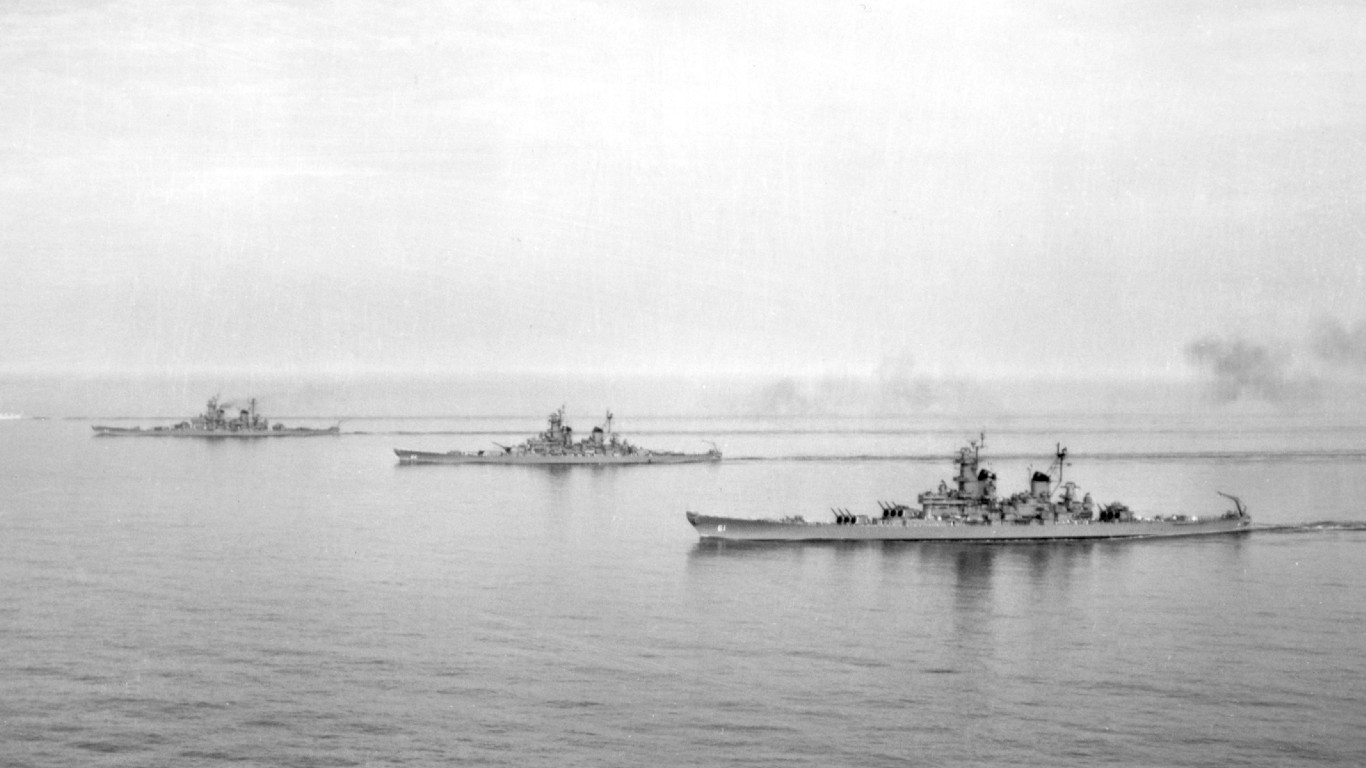
During World War II, the United States faced significant challenges against formidable foes at sea. While American battleships, carriers, cruisers, and destroyers played a pivotal role overcoming the Axis powers, many vessels faced tragic fates, succumbing to enemy forces and sinking into the ocean’s depths. This article looks into the most notable American ship losses from WWII.
To identify the major American ships sunk during World War II, 24/7 Wall St. reviewed Allied War Losses compiled by Uboat.net, an online database of ships sunk during the two world wars. Only the largest U.S. Navy ships – battleships, heavy cruisers, anti-aircraft cruisers, and aircraft carriers – that were sunk in WWII are included, ordered by when they were sunk. Supplemental information about the type and class of these ships, where they were sunk, and when they were originally launched from, also came from Uboat.net.
The infamous date of December 7, 1941, marked one of the most catastrophic naval assaults in U.S. history – the Japanese attack on Pearl Harbor, forever etched in memory. This surprise offensive led to the sinking of several American battleships, including the USS Arizona (BB-39) and the USS Oklahoma (BB-37). (Also see, the most mass produced U.S. naval ships in WWII.)
Another significant battleship lost was the USS Indianapolis (CA-35). This cruiser of the Portland class was en route to Guam after a covert mission delivering atomic bomb components to Tinian Island. Struck by torpedoes from Japanese submarine I-58, the USS Indianapolis sank in the Philippine Sea within 12 minutes. Out of its crew of 1,196, only 316 survived, with many perishing due to injuries, dehydration, and shark attacks. (A battle with Japan during WWII was the largest in U.S. naval history.)
All the ships on this roster met their fate in the Pacific Theater, with the timeline stretching from the outset at Pearl Harbor to the final incidents in the Philippine Sea. Notably, some ships were considerably older than others. While a handful had been launched prior to World War I, others had just entered service a year before WWII’s end.
These sunken vessels stand as poignant reminders of one of the most monumental naval conflicts in history. Here is a look at the major American ships sunk during WWII.
Click here to see the American battleships sunk during WWII.
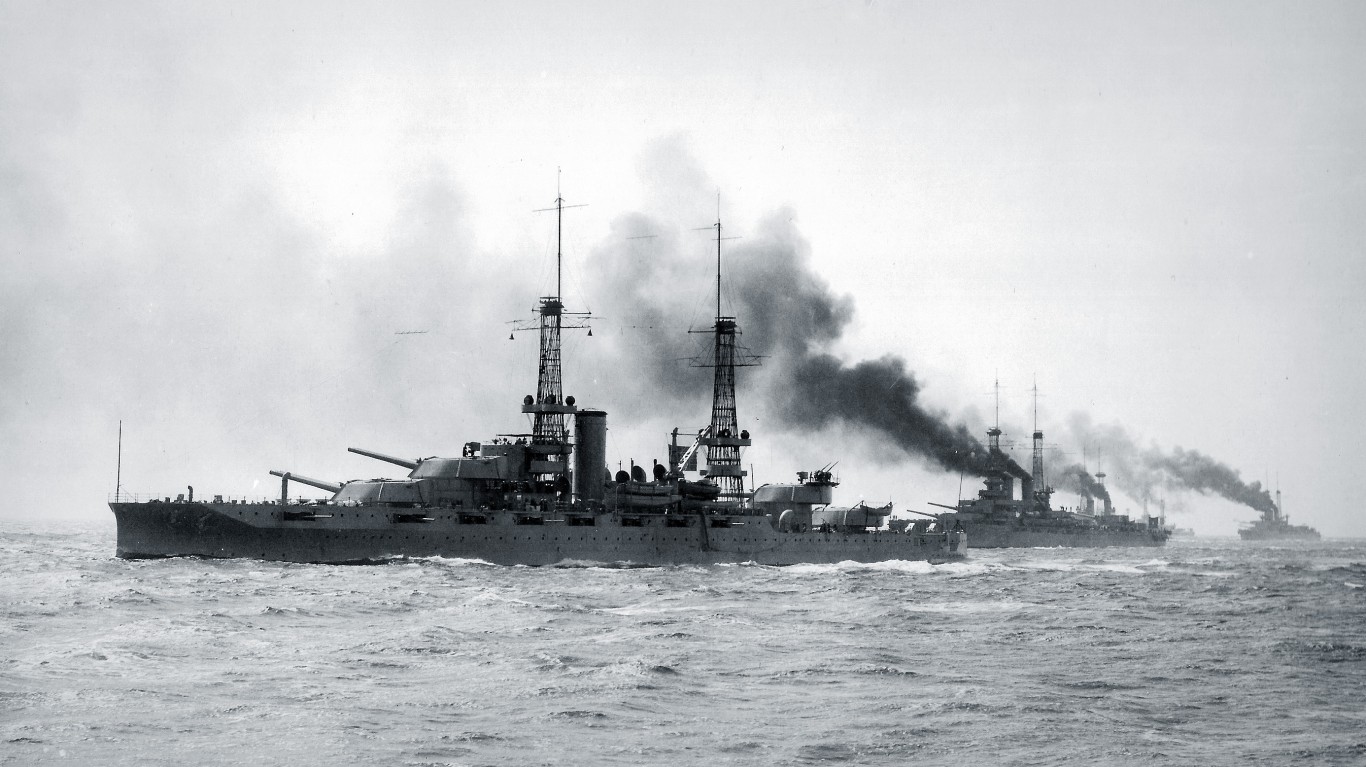
USS Arizona (BB-39)
> Date sunk: December 7, 1941
> Type: Battleship
> Class: Pennsylvania
> Battle location: Pearl Harbor, Hawaii
> Launch date: June 19, 1915
[in-text-ad]
USS Oklahoma (BB-37)
> Date sunk: December 7, 1941
> Type: Battleship
> Class: Nevada
> Battle location: Pearl Harbor, Hawaii
> Launch date: March 23, 1914
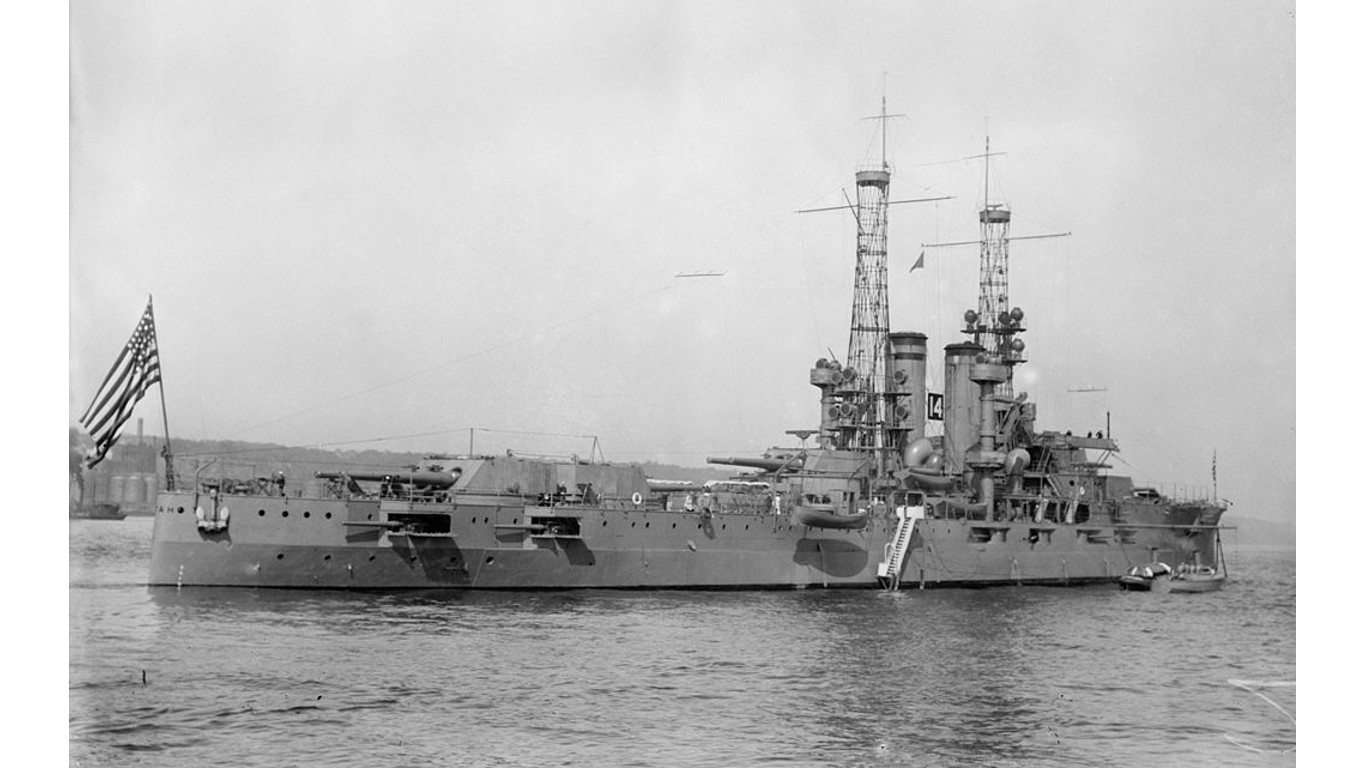
USS Utah (AG-16)
> Date sunk: December 7, 1941
> Type: Battleship
> Class: Florida
> Battle location: Pearl Harbor, Hawaii
> Launch date: December 23, 1909
USS Houston (CA-30)
> Date sunk: March 1, 1942
> Type: Heavy cruiser
> Class: Northampton
> Battle location: Soenda Straight, Indonesia
> Launch date:
[in-text-ad-2]
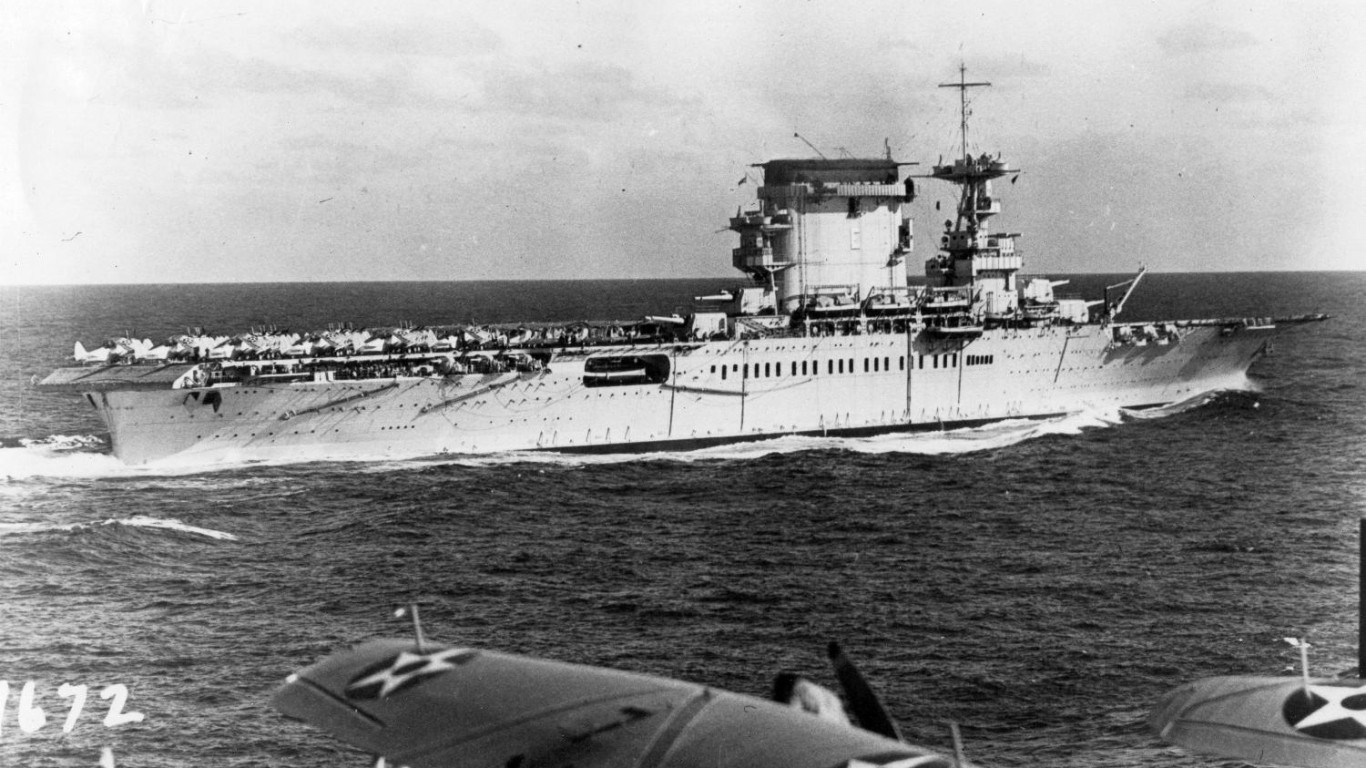
USS Lexington (CV-2)
> Date sunk: May 8, 1942
> Type: Aircraft Carrier
> Class: Lexington
> Battle location: Battle of Coral Sea
> Launch date: October 3, 1925

USS Yorktown (CV-5)
> Date sunk: June 7, 1942
> Type: Aircraft carrier
> Class: Yorktown
> Battle location: Battle of Midway
> Launch date: April 4, 1936
[in-text-ad]
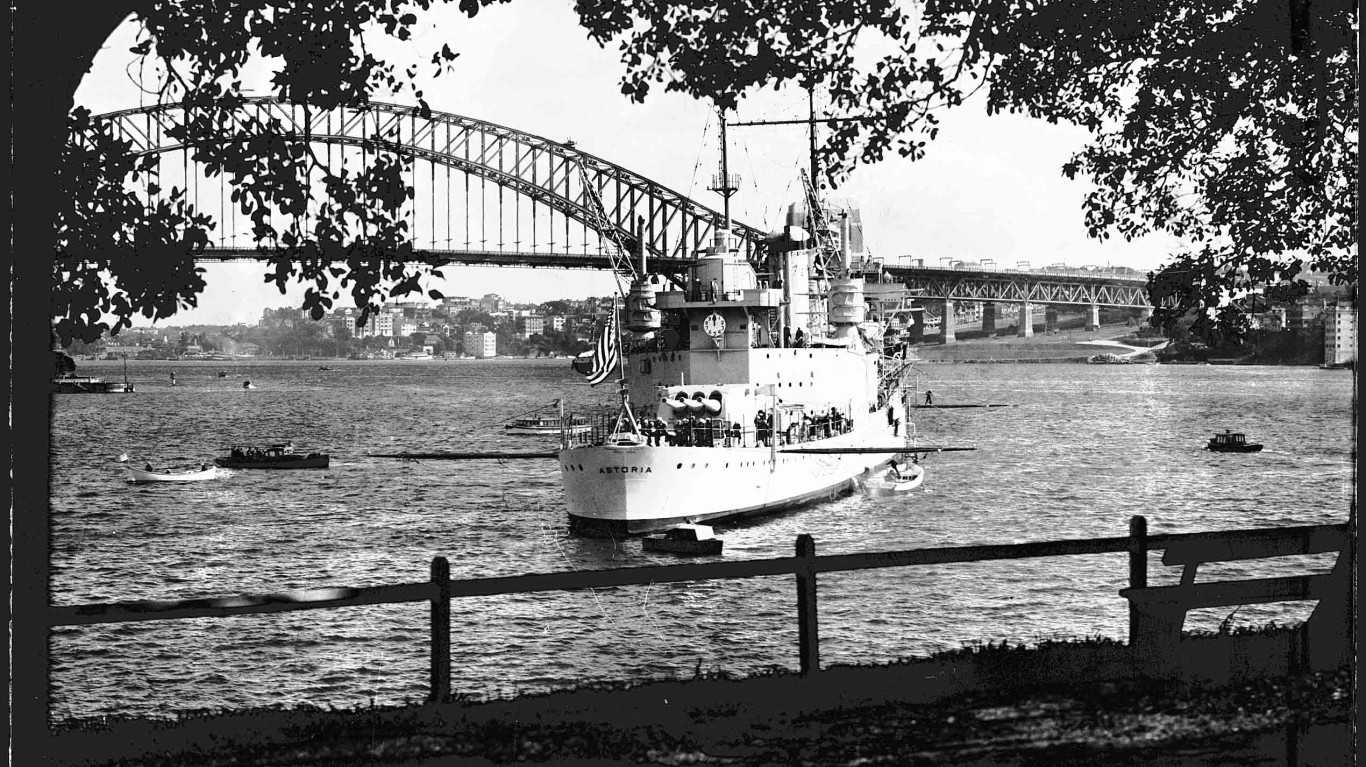
USS Astoria (CA-34)
> Date sunk: August 9 1942
> Type: Heavy cruiser
> Class: New Orleans
> Battle location: Battle of Savo Island
> Launch date: December 16, 1933
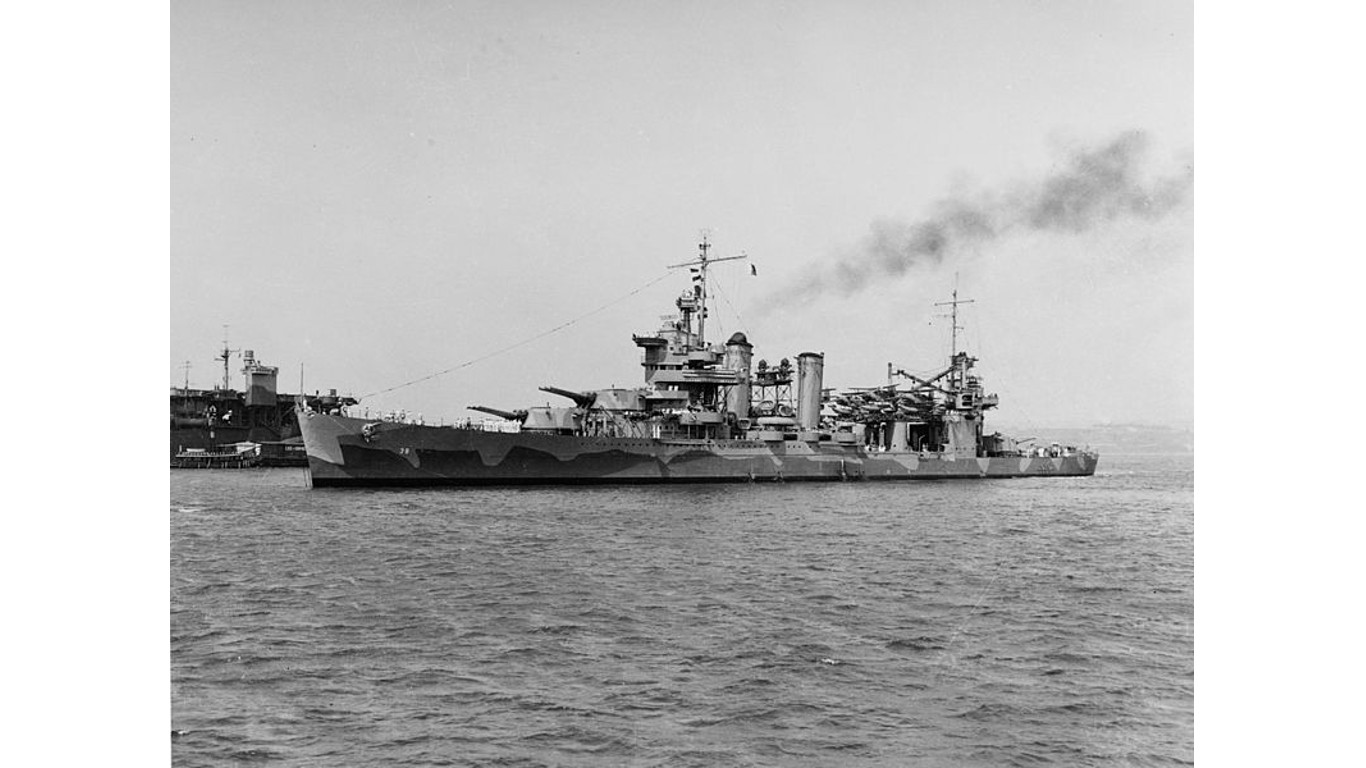
USS Quincy (CA-39)
> Date sunk: August 9, 1942
> Type: Heavy cruiser
> Class: New Orleans
> Battle location: Battle of Savo Island
> Launch date: June 19, 1935
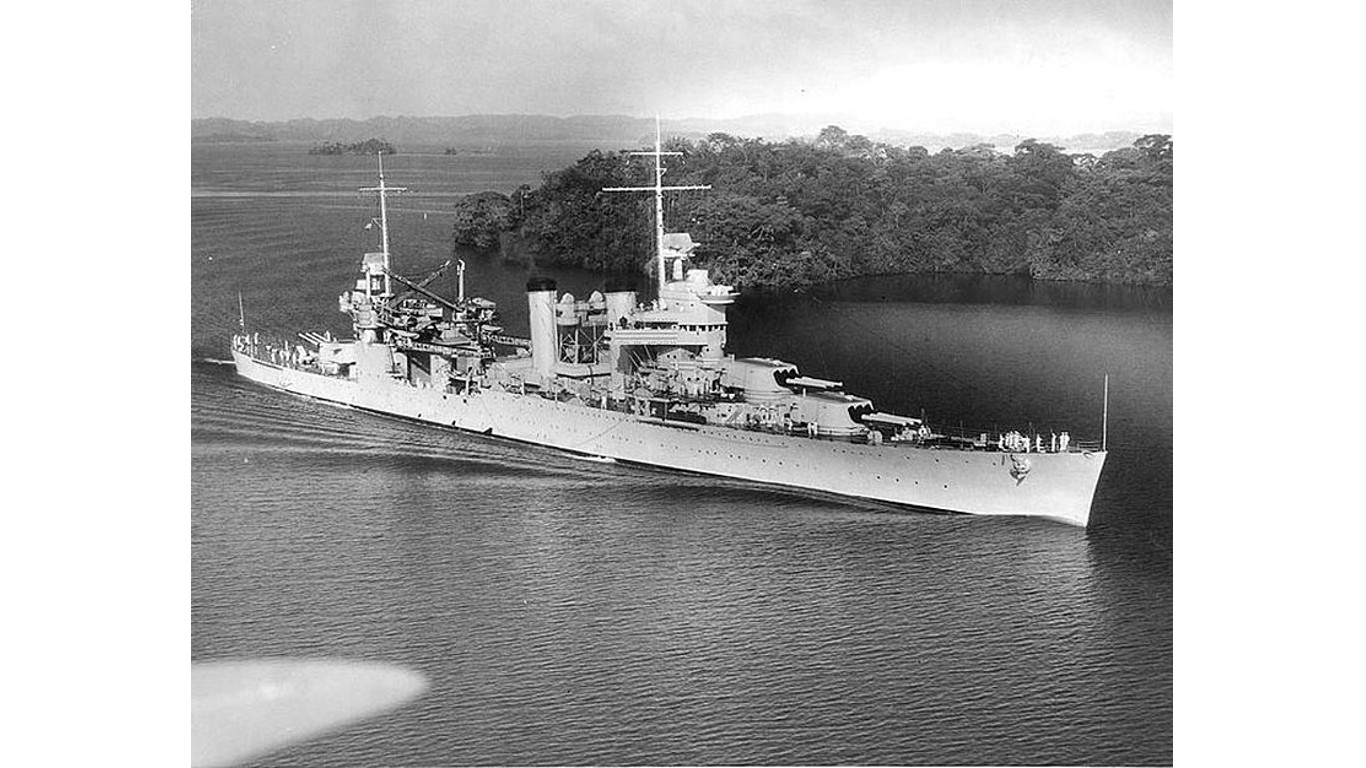
USS Vincennes (CA-44)
> Date sunk: August 9, 1942
> Type: Heavy cruiser
> Class: New Orleans
> Battle location: Battle of Savo Island
> Launch date: May 21, 1936
[in-text-ad-2]

USS Wasp (CV-7)
> Date sunk: September 15, 1942
> Type: Aircraft Carrier
> Class: Wasp
> Battle location: Battle of Guadalcanal
> Launch date: April 4, 1939

USS Hornet (CV-8)
> Date sunk: October 27, 1942
> Type: Aircraft carrier
> Class: Yorktown
> Battle location: Battle of Santa Cruz
> Launch date: December 14, 1940
[in-text-ad]
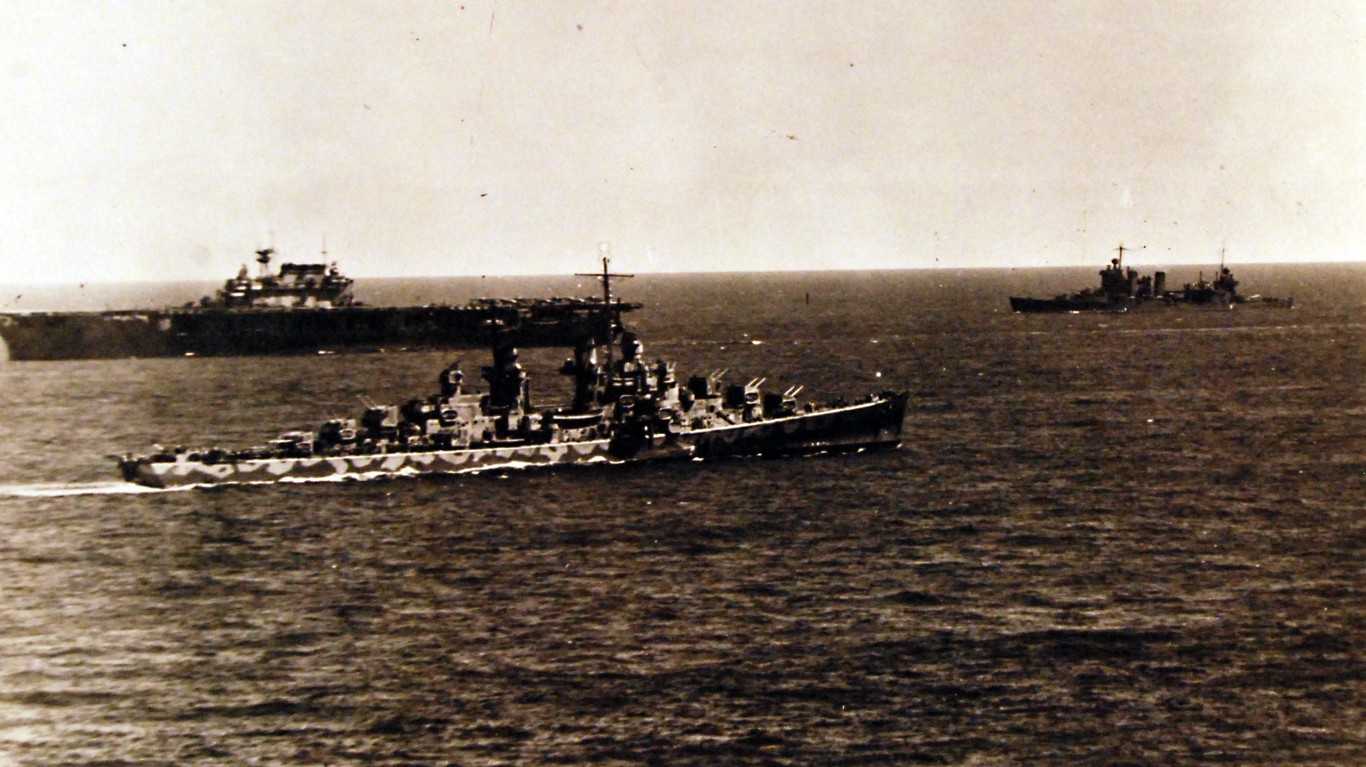
USS Atlanta (CL-51)
> Date sunk: November 13, 1942
> Type: Anti-aircraft cruiser
> Class: Atlanta
> Battle location: Battle of Guadalcanal
> Launch date: September 6, 1941
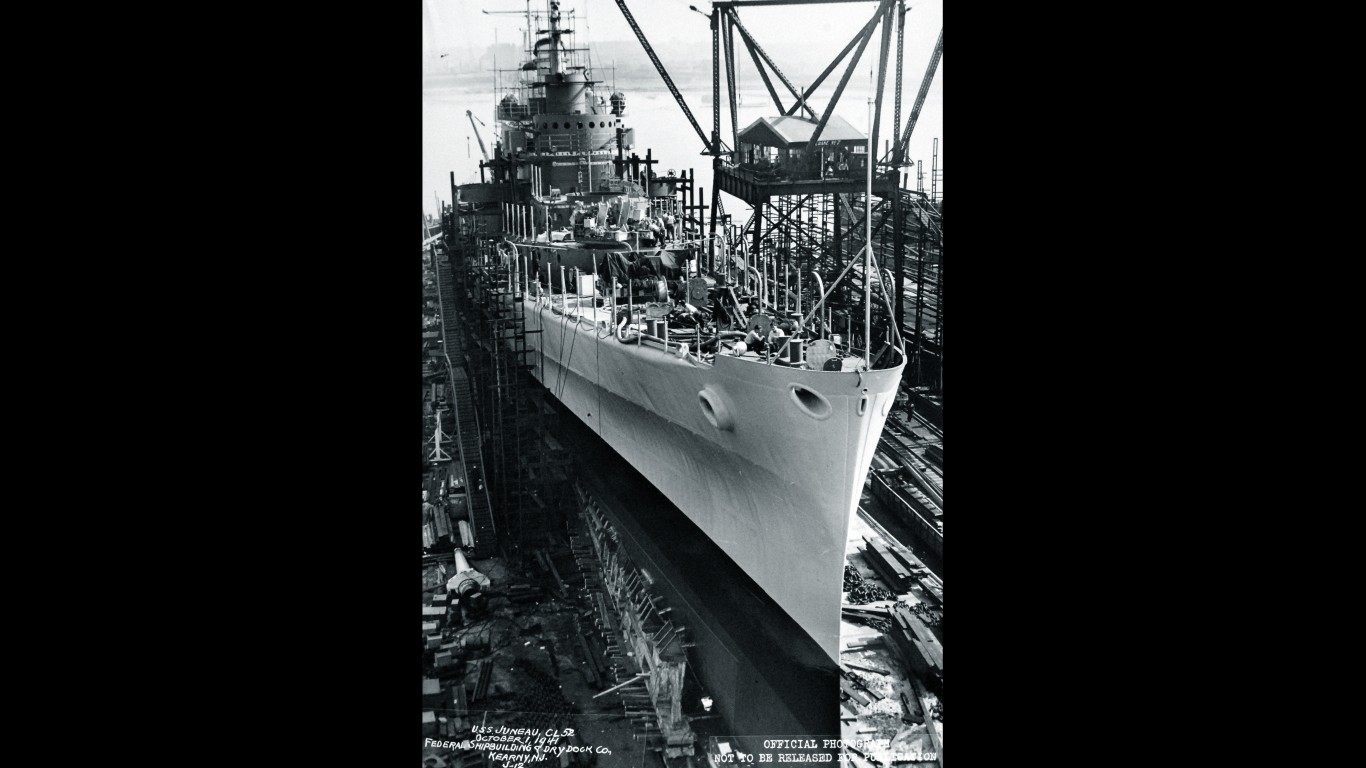
USS Juneau (CL-52)
> Date sunk: November 13, 1942
> Type: Anti-aircraft cruiser
> Class: Atlanta
> Battle location: Battle of Guadalcanal
> Launch date: October 25, 1941
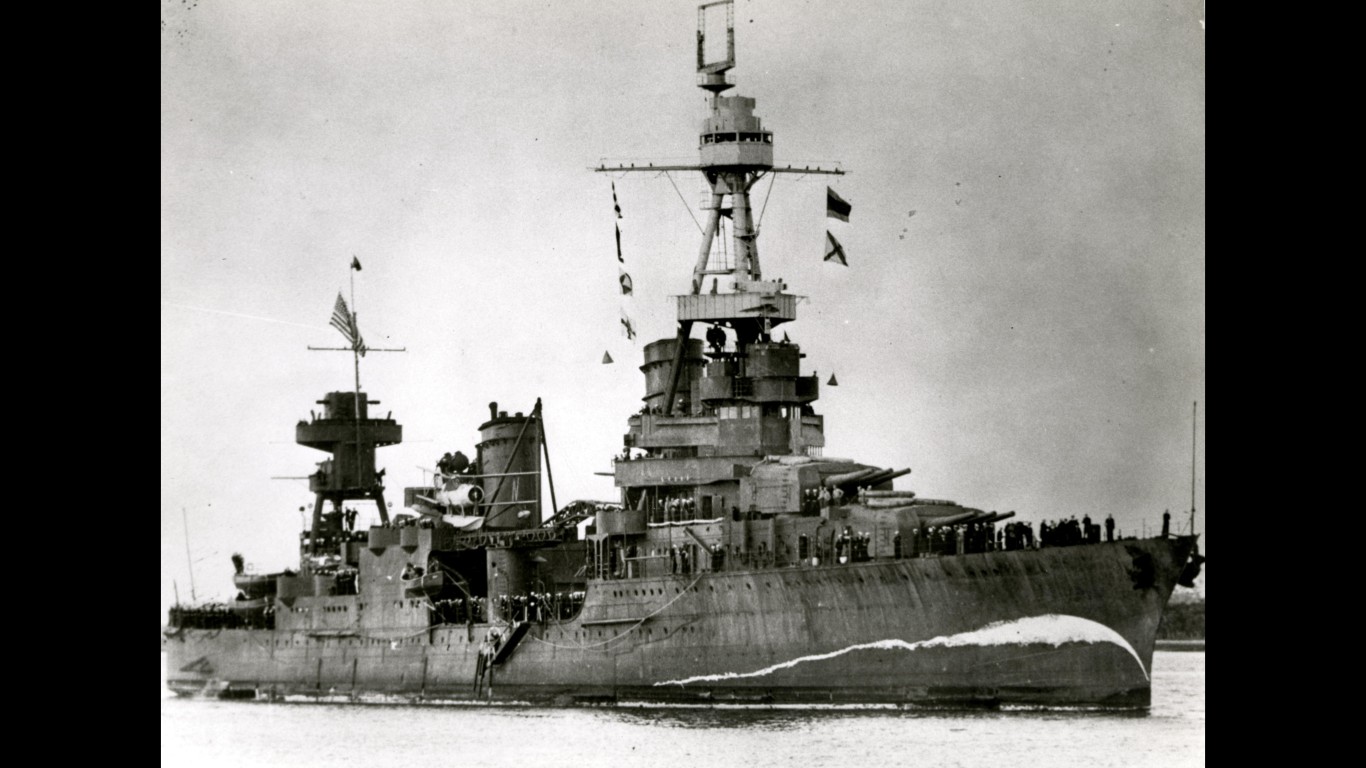
USS Northampton (CA-26)
> Date sunk: December 1, 1942
> Type: Heavy cruiser
> Class: Northampton
> Battle location: Battle of Tassafaronga
> Launch date: September 5, 1929
[in-text-ad-2]
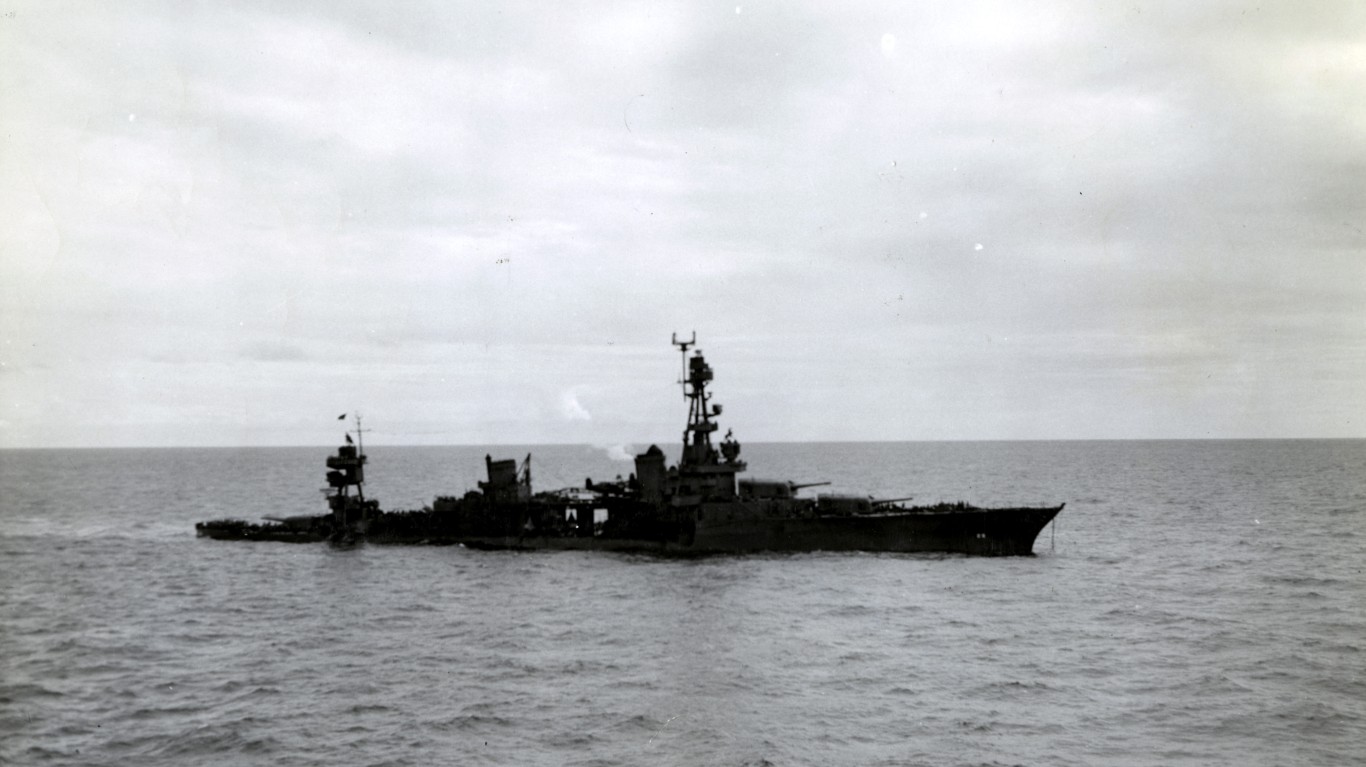
USS Chicago (CA-29)
> Date sunk: January 30, 1943
> Type: Heavy cruiser
> Class: Northampton
> Battle location: Battle of Rennel Island
> Launch date: April 10, 1930
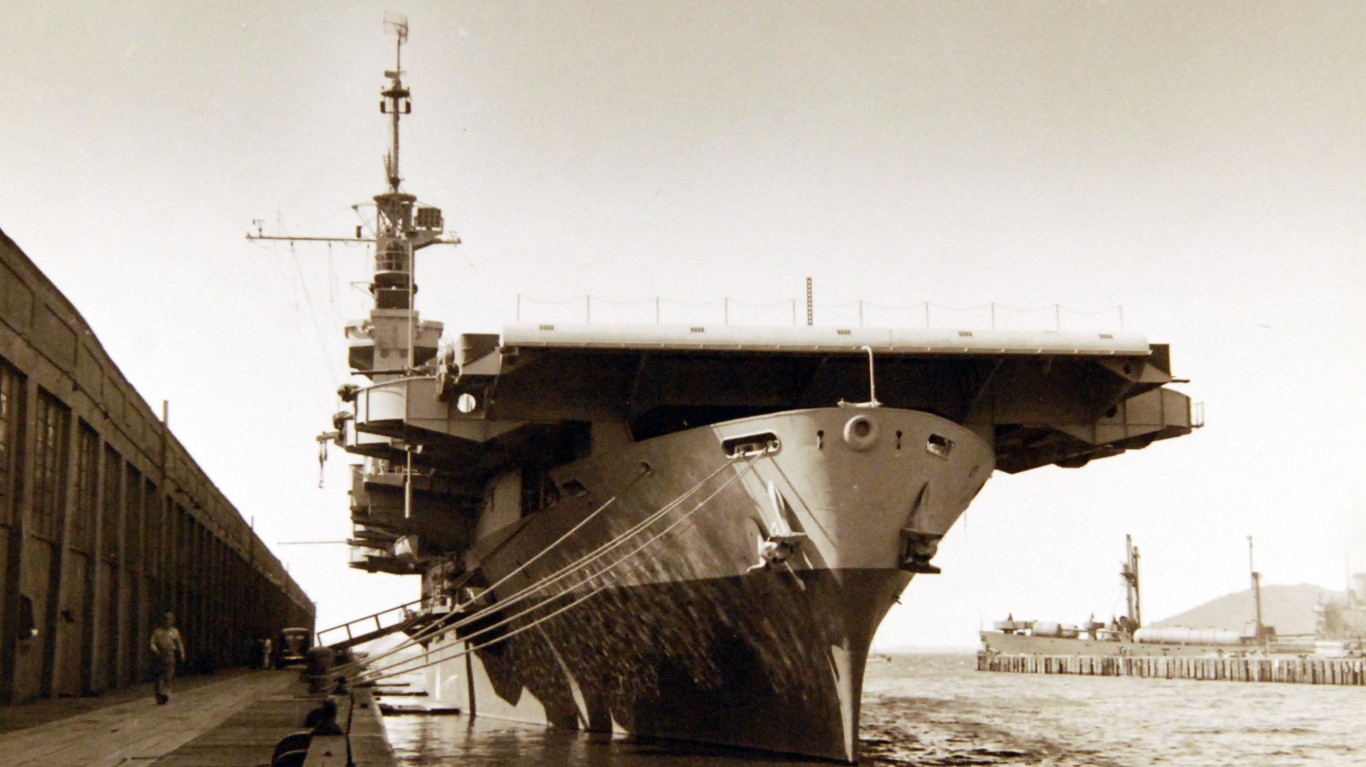
USS Liscome Bay (CVE-56)
> Date sunk: November 24, 1943
> Type: Escort carrier
> Class: Casablanca
> Battle location: Makin Island
> Launch date: April 19, 1943
[in-text-ad]

USS Block Island (CVE-21)
> Date sunk: May 29, 1944
> Type: Escort carrier
> Class: Bogue
> Battle location: Canary Islands
> Launch date: June 6, 1942
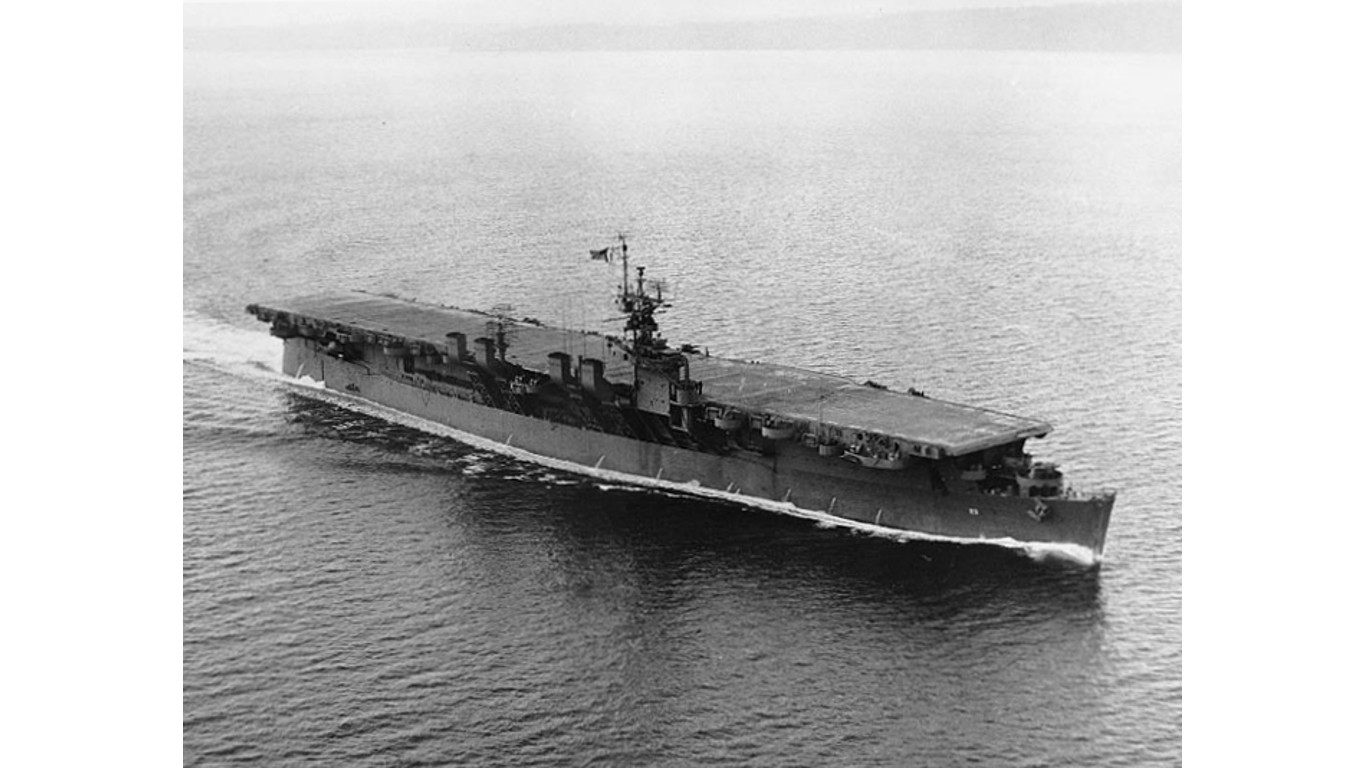
USS Princeton (CVL-23)
> Date sunk: October 24, 1944
> Type: Light fleet carrier
> Class: Independence
> Battle location: Battle of Leyte Gulf
> Launch date: December 6, 1942
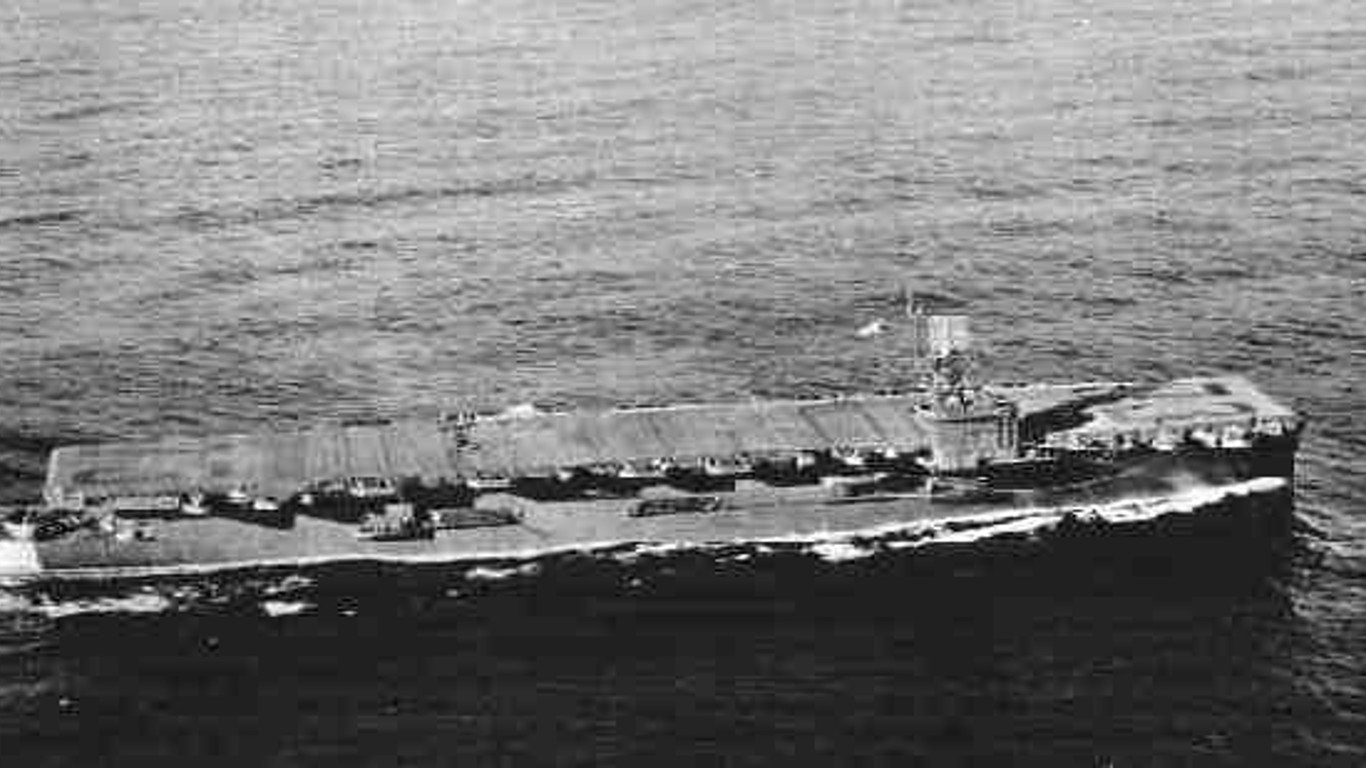
USS Gambier Bay (CVE-73)
> Date sunk: October 24, 1944
> Type: Escort carrier
> Class: Casablanca
> Battle location: Battle of Leyte Gulf
> Launch date: November 22, 1943
[in-text-ad-2]
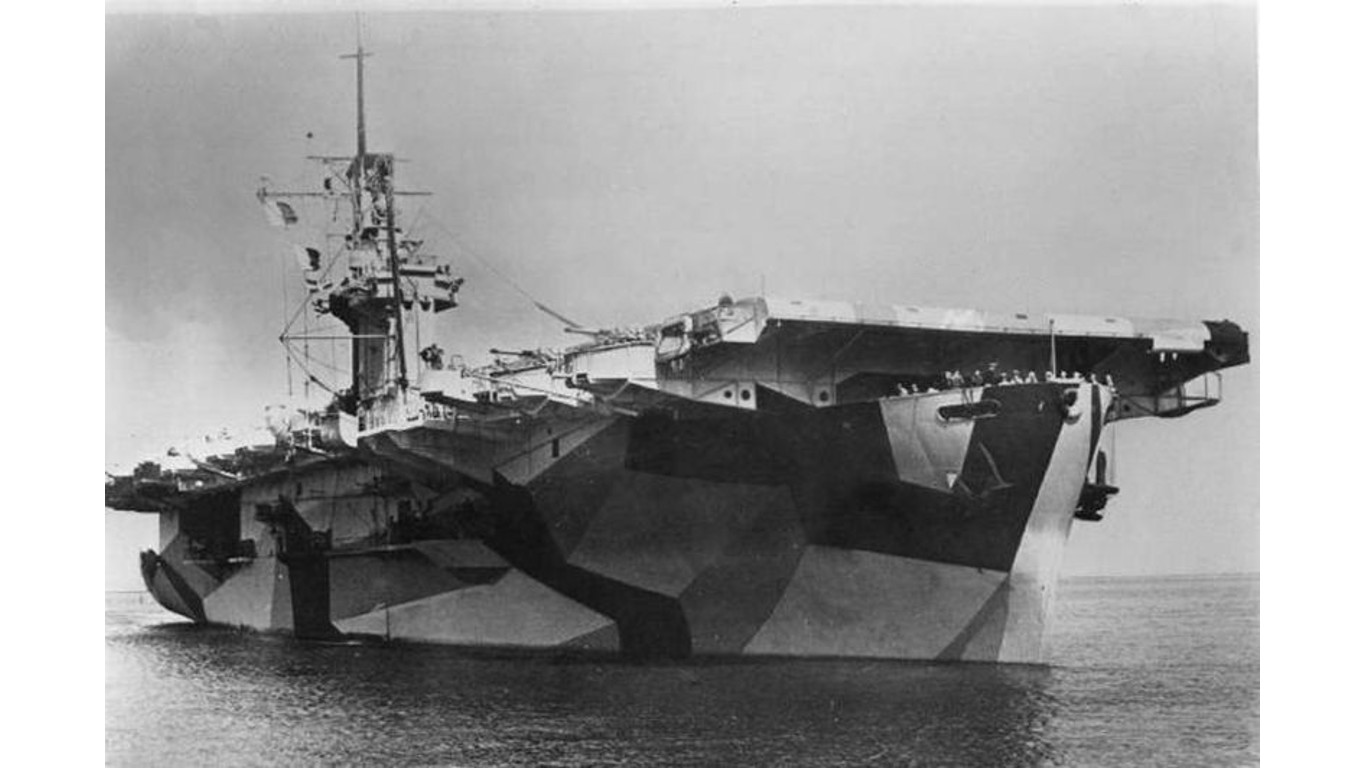
USS Midway / St. Lo (CVE-63)
> Date sunk: October 25, 1944
> Type: Escort carrier
> Class: Casablanca
> Battle location: Battle of Leyte Gulf
> Launch date: August 17, 1943
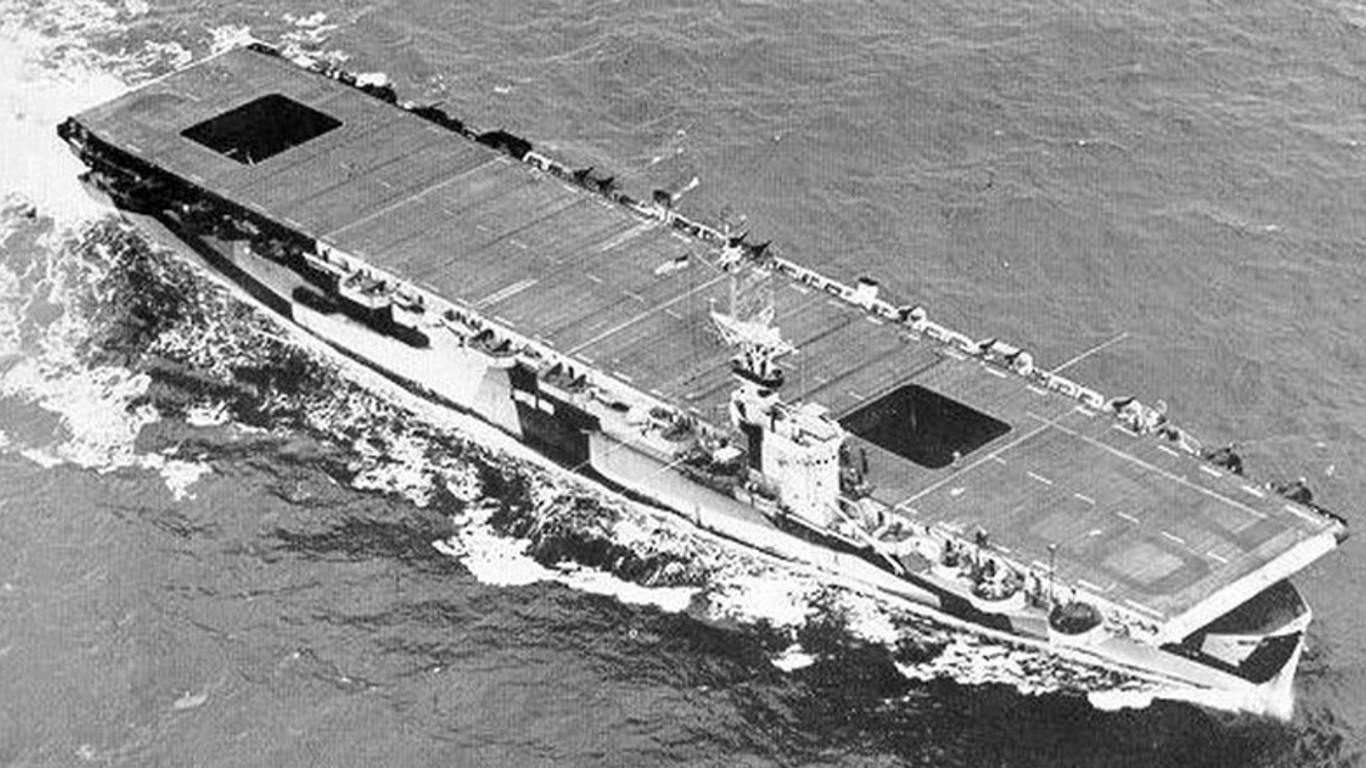
USS Ommaney Bay (CVE-79)
> Date sunk: January 4, 1945
> Type: Escort carrier
> Class: Casablanca
> Battle location: Sulu Sea
> Launch date: December 29, 1943
[in-text-ad]
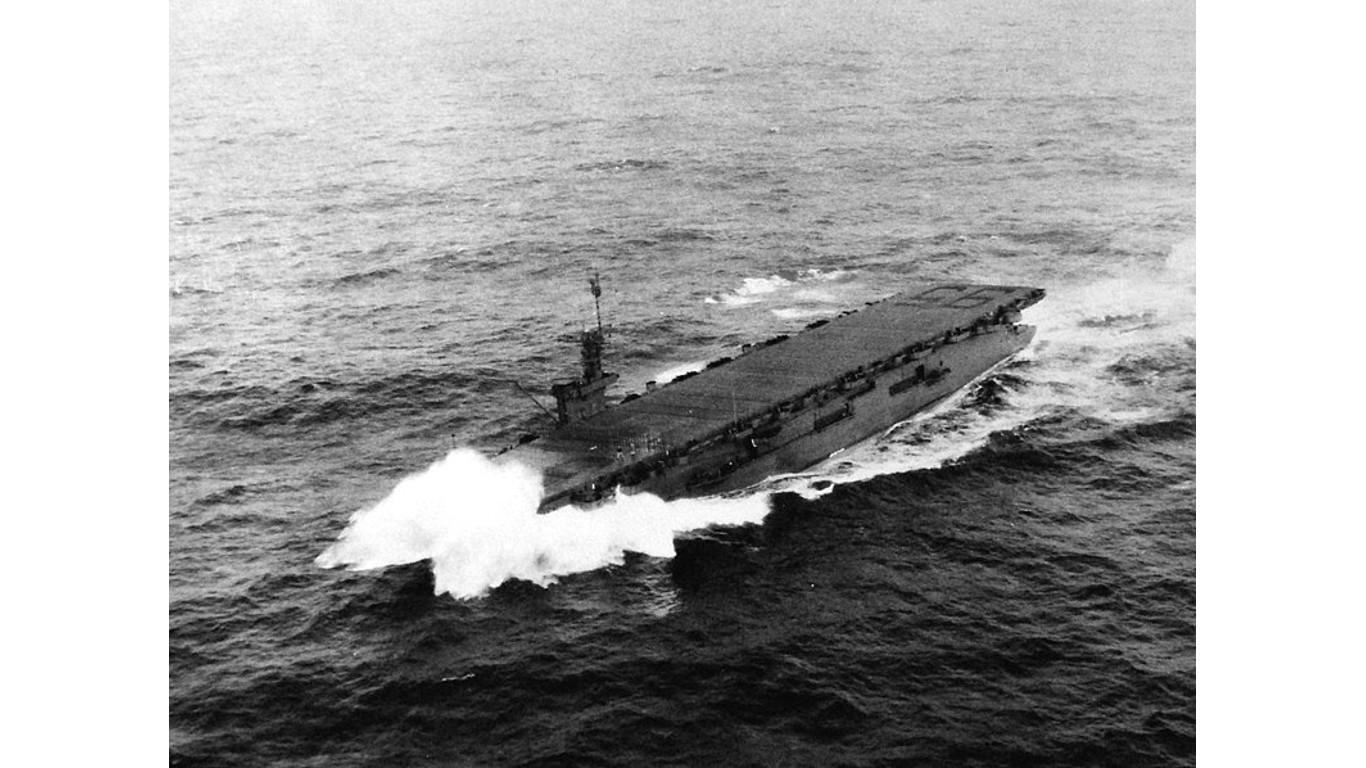
USS Bismark Sea (CVE-95)
> Date sunk: February 21, 1945
> Type: Escort carrier
> Class: Casablanca
> Battle location: Iwo Jima
> Launch date: April 17, 1944
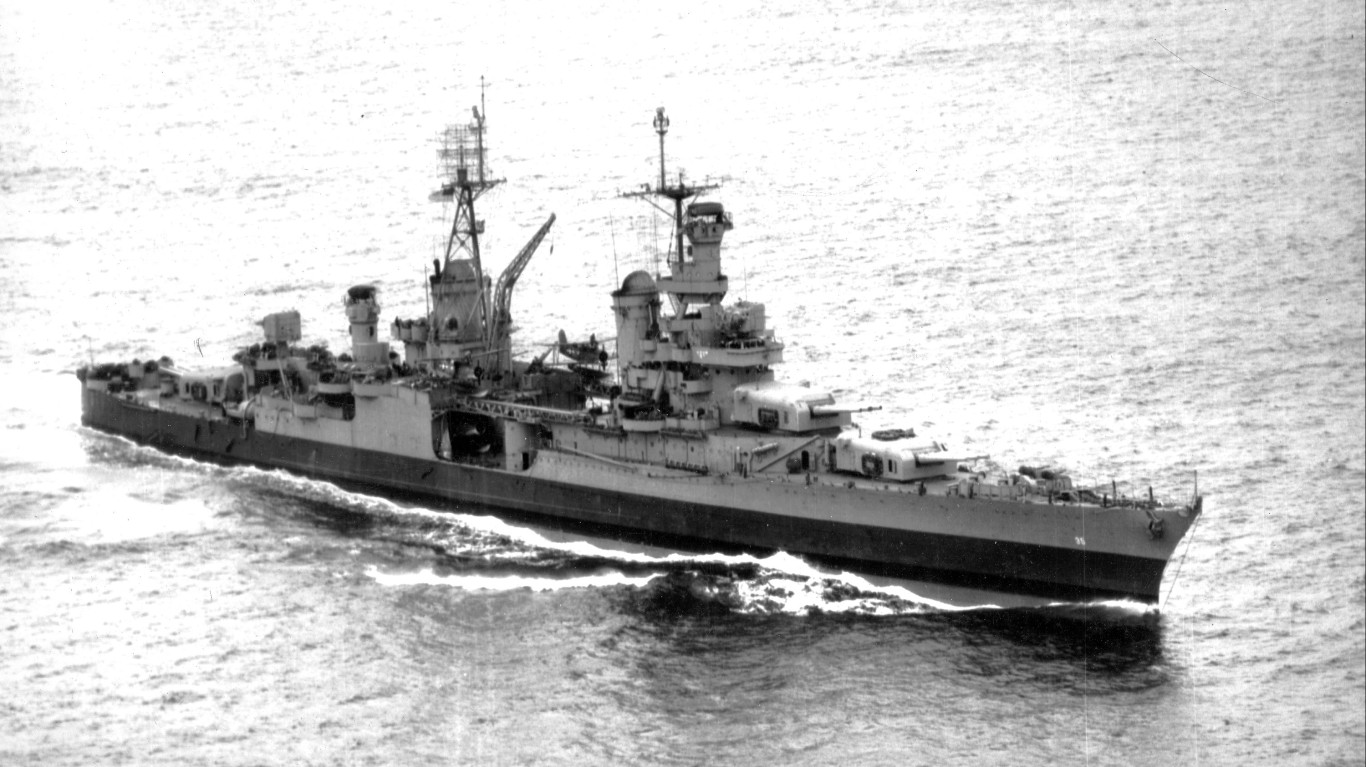
USS Indianapolis (CA-35)
> Date sunk: July 30, 1945
> Type: Heavy cruiser
> Class: Portland
> Battle location: Philippine Sea
> Launch date: November 7, 1931
Is Your Money Earning the Best Possible Rate? (Sponsor)
Let’s face it: If your money is just sitting in a checking account, you’re losing value every single day. With most checking accounts offering little to no interest, the cash you worked so hard to save is gradually being eroded by inflation.
However, by moving that money into a high-yield savings account, you can put your cash to work, growing steadily with little to no effort on your part. In just a few clicks, you can set up a high-yield savings account and start earning interest immediately.
There are plenty of reputable banks and online platforms that offer competitive rates, and many of them come with zero fees and no minimum balance requirements. Click here to see if you’re earning the best possible rate on your money!
Thank you for reading! Have some feedback for us?
Contact the 24/7 Wall St. editorial team.
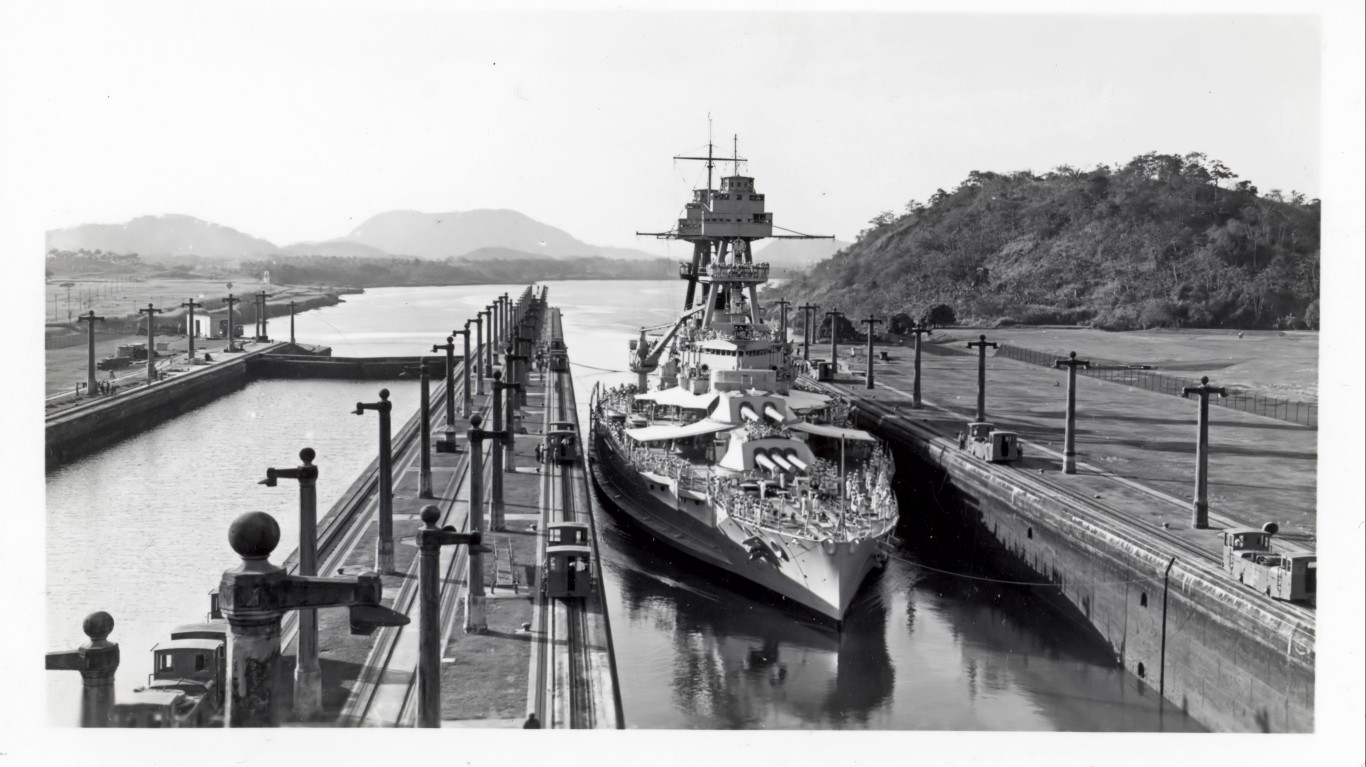
 24/7 Wall St.
24/7 Wall St.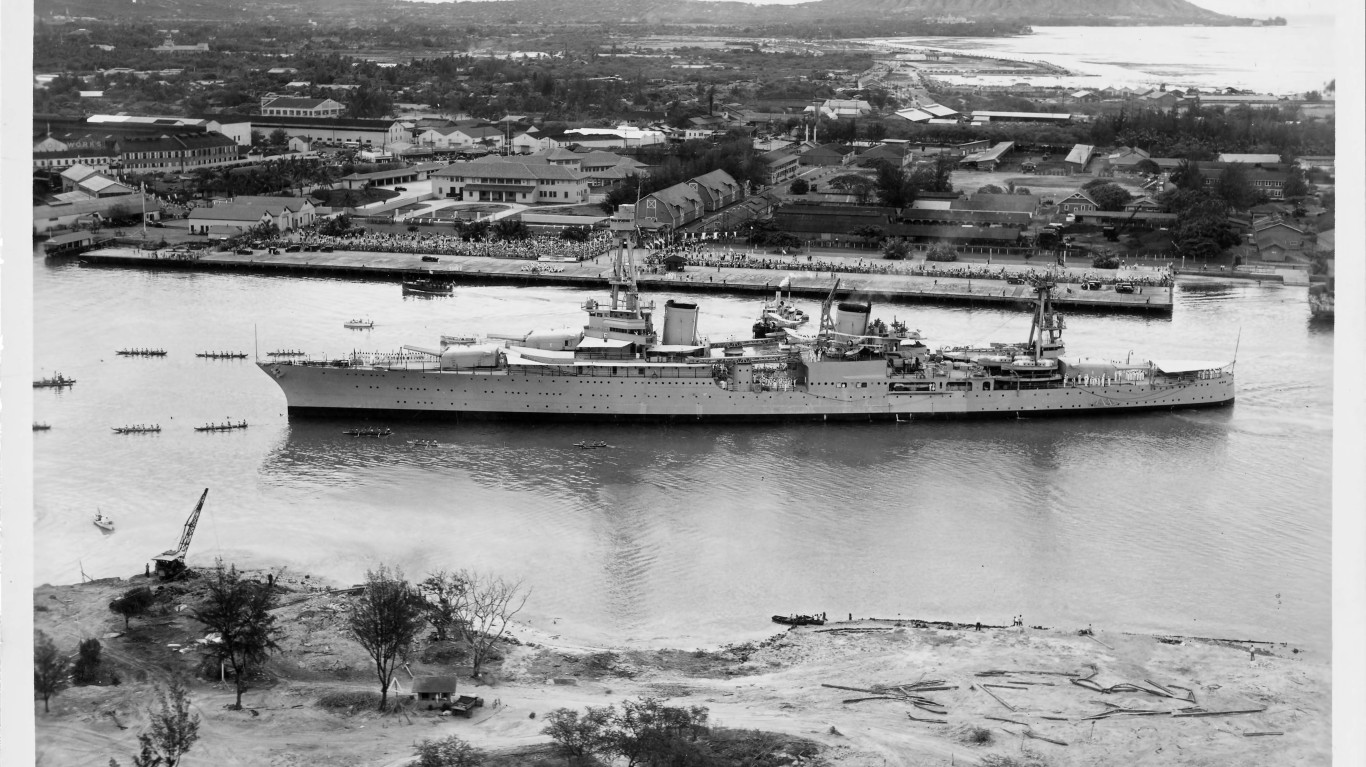
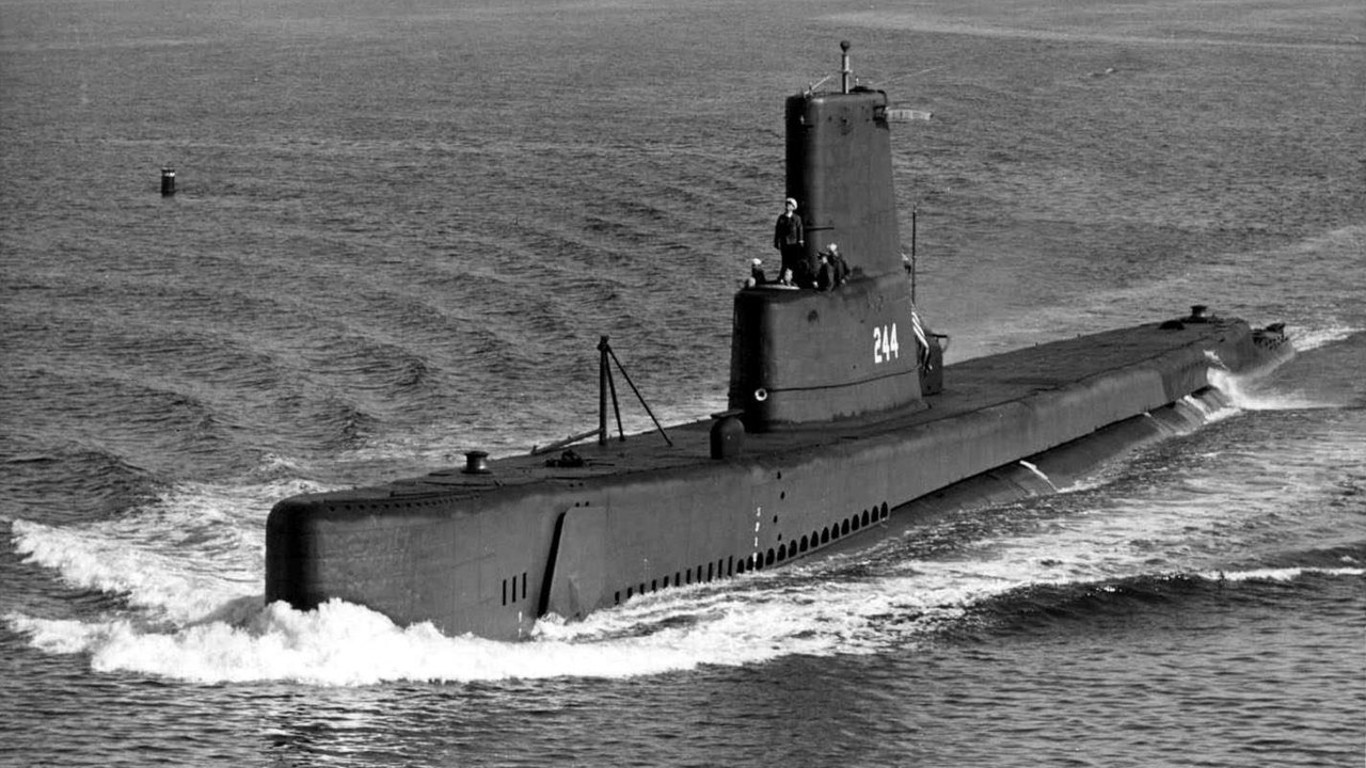 24/7 Wall St.
24/7 Wall St.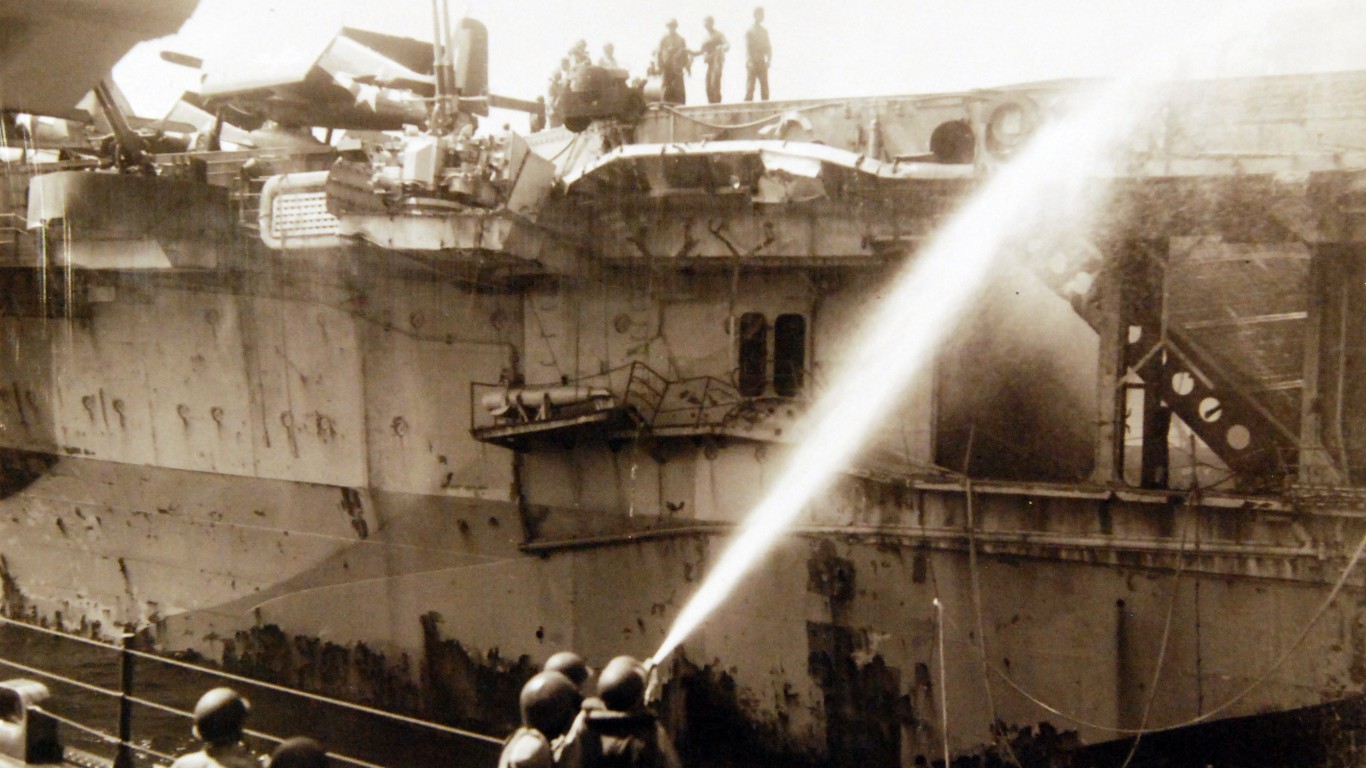 24/7 Wall St.
24/7 Wall St.


